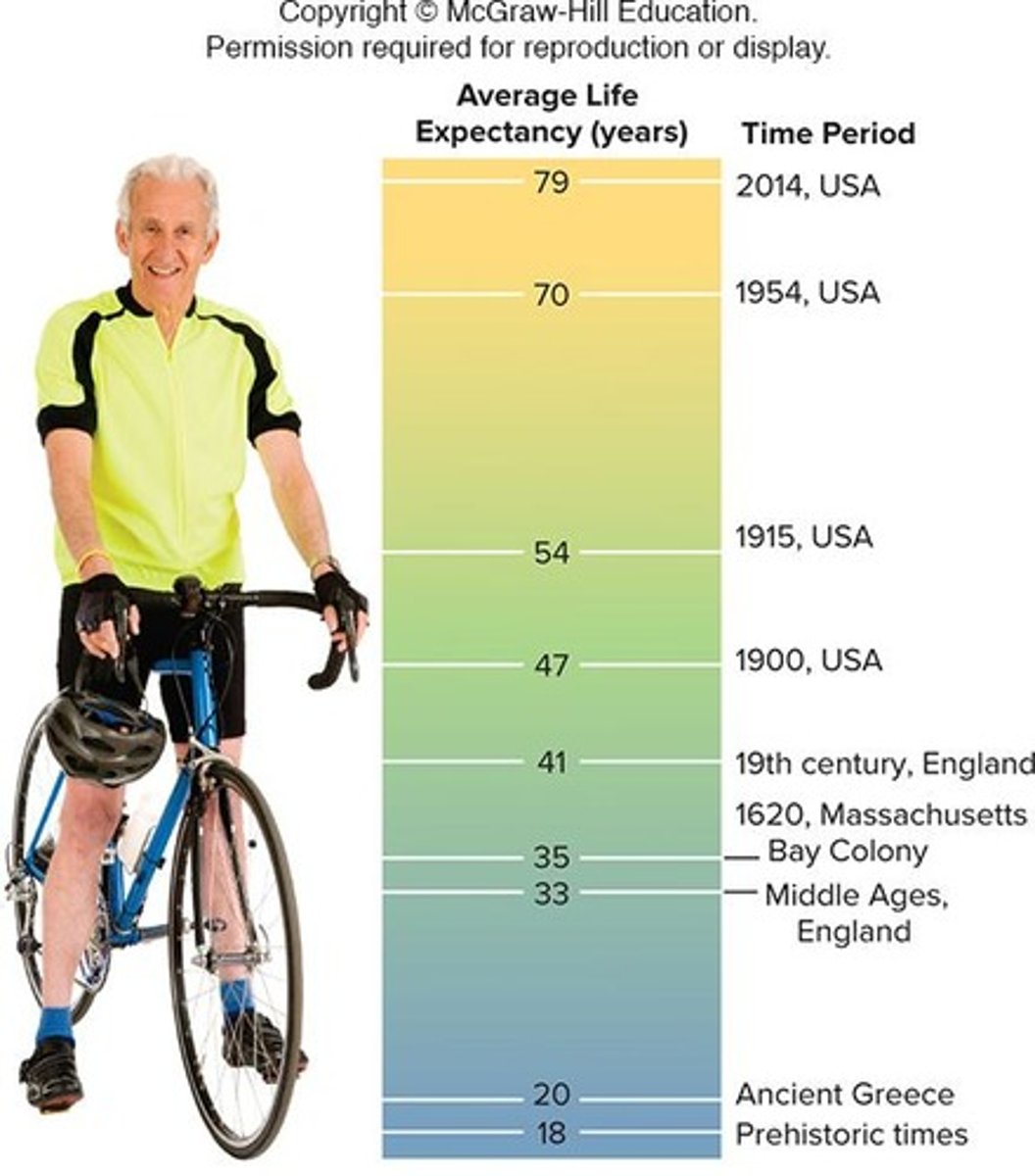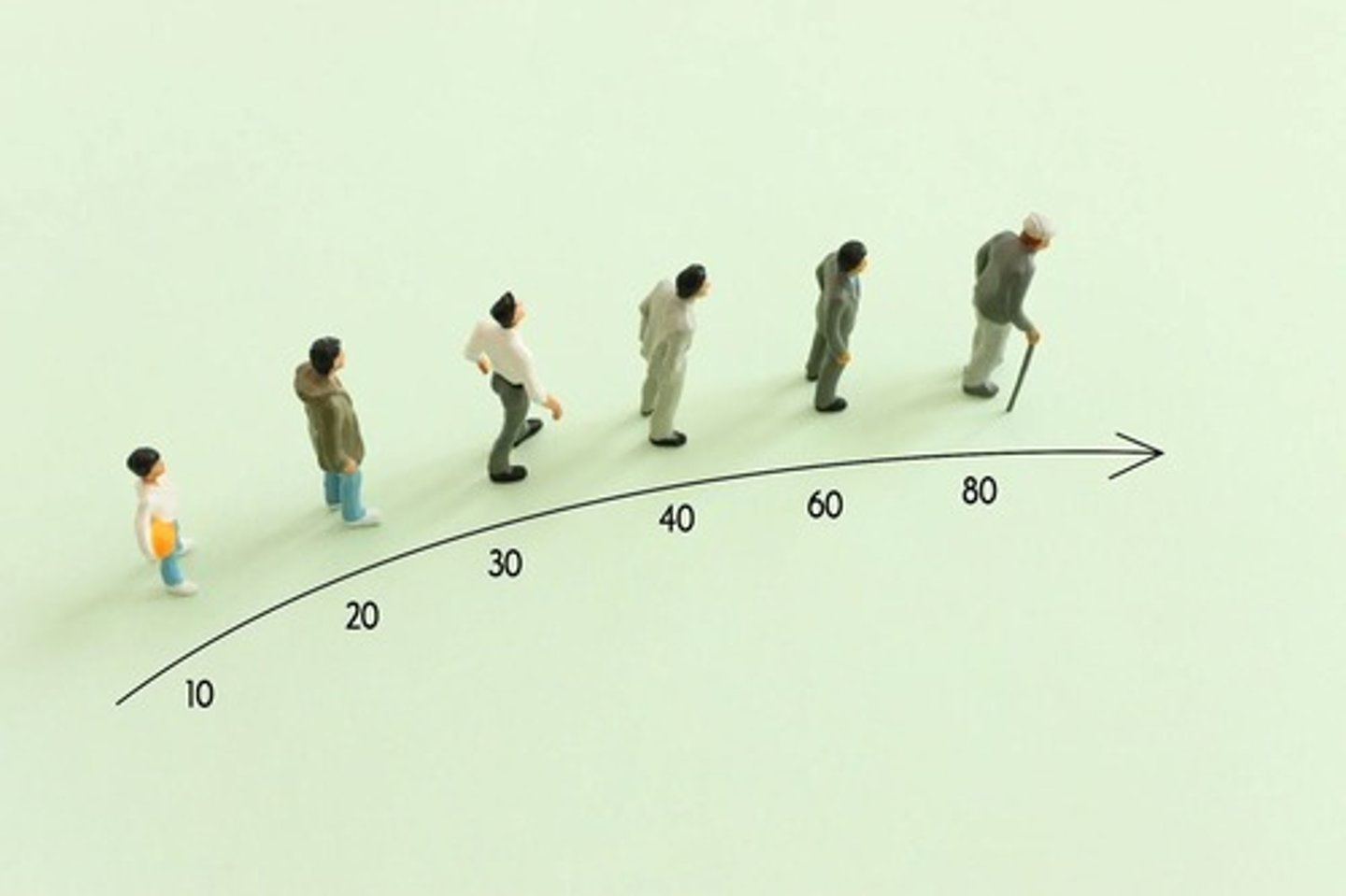Physical Development & Aging: Lifespan Perspectives in Psychology
1/45
There's no tags or description
Looks like no tags are added yet.
Name | Mastery | Learn | Test | Matching | Spaced |
|---|
No study sessions yet.
46 Terms
What are the three processes that interact throughout life in development?
Biological, cognitive, and socioemotional processes.
What pattern of growth describes development from head to tail?
Cephalocaudal.
What pattern of growth describes development from the center outward?
Proximodistal.
At what age is the brain typically near full size?
By approximately 5 years.
What are the risks associated with infancy and childhood?
Malnutrition and obesity.
What significant changes occur during adolescence?
Puberty, hormonal changes, body image issues, and eating disorders.
What begins to occur in early adulthood regarding physical development?
Senescence begins, and lifestyle and experiences shape progression.
What visible changes are common in middle adulthood?
Wrinkles, height loss, menopause, and increased cardiovascular risk.
What characterizes late adulthood in terms of physical development?
Pronounced physical decline with variability in experience.
What is the difference between life span and life expectancy?
Life span is the maximum number of years a human can live, while life expectancy is the average number of years a person will live.

What study shows the effects of lifestyle on aging?
CARDIA study.
What health behaviors are important for healthy aging?
Exercise and sleep.
How do older adults generally report their happiness levels?
Older adults often report higher happiness levels.
What biblical theme reflects our physical bodies?
We bear God's image in physical bodies that require stewardship and care.
What does primary aging refer to?
Natural age-related changes that occur regardless of health.
What does secondary aging refer to?
Changes caused by disease and environmental factors.
What is sarcopenia?
Age-related loss of muscle mass and strength.
At what average age does menopause typically occur in women?
Late 40s to early 50s.
What percentage of longevity is influenced by lifestyle factors according to Santrock?
Approximately 75%.
What chronic condition is most common in late adulthood?
Arthritis.
What cultural perspective views aging as a time of wisdom?
Eastern collectivist cultures.
What is the relationship between positive perceptions of aging and longevity?
Positive perceptions of aging are linked to longer life expectancy, potentially up to 7.5 years.
What is the average life span of a human?
Approximately 120-125 years.

What is the impact of poor sleep in older adulthood?
Increased risks of depression and accidents.
What is a common misconception about physical development across individuals?
That it is uniform; in reality, it varies widely.
What does the term 'senescence' refer to?
The decline in physical efficiency with age.
What is the process of aging called?
Senescence
At what age does senescence typically start?
Around 20 years old
What are the two main factors that influence longevity?
Genetics (25%) and lifestyle (75%)
What is the maximum lifespan of a human?
120-125 years

What is the average life expectancy?
The average number of years a person is expected to live
What is the significance of the CARDIA Study (2022)?
It found that fitness in early adulthood correlates with diabetes and high blood pressure in later years.
What is the average amount of sleep recommended for newborns?
16-17 hours per day
How many hours of sleep do adolescents typically need?
About 8 hours per night
What percentage of college students do not get enough sleep?
70%
What is the effect of poor sleep on older adults?
It can lead to other health problems.
What are the two patterns of growth described in physical development?
Cephalocaudal (head to toe) and Proximodistal (center to outward)
What happens to body weight during infancy?
Newborn weight doubles by 4 months and triples by 1 year.
What is a common physical development concern in childhood?
Malnutrition
At what age do females typically experience their growth spurt?
Around 11.5 years
At what age do males typically experience their growth spurt?
Around 13.5 years
What changes occur in physical appearance during senescence?
Muscle and bone loss, fat gain, and changes in skin appearance.

What is the impact of sleep on childhood development?
Child sleep affects language development, social skills, and peer acceptance.
What is the average sleep requirement for adults?
7 hours per night
What are Activities of Daily Living (ADLs)?
Basic tasks necessary for self-care that may decline in late adulthood.
What is a key theme in a Biblical view of physical development?
Embodied: we bear God's image in real, physical bodies.
